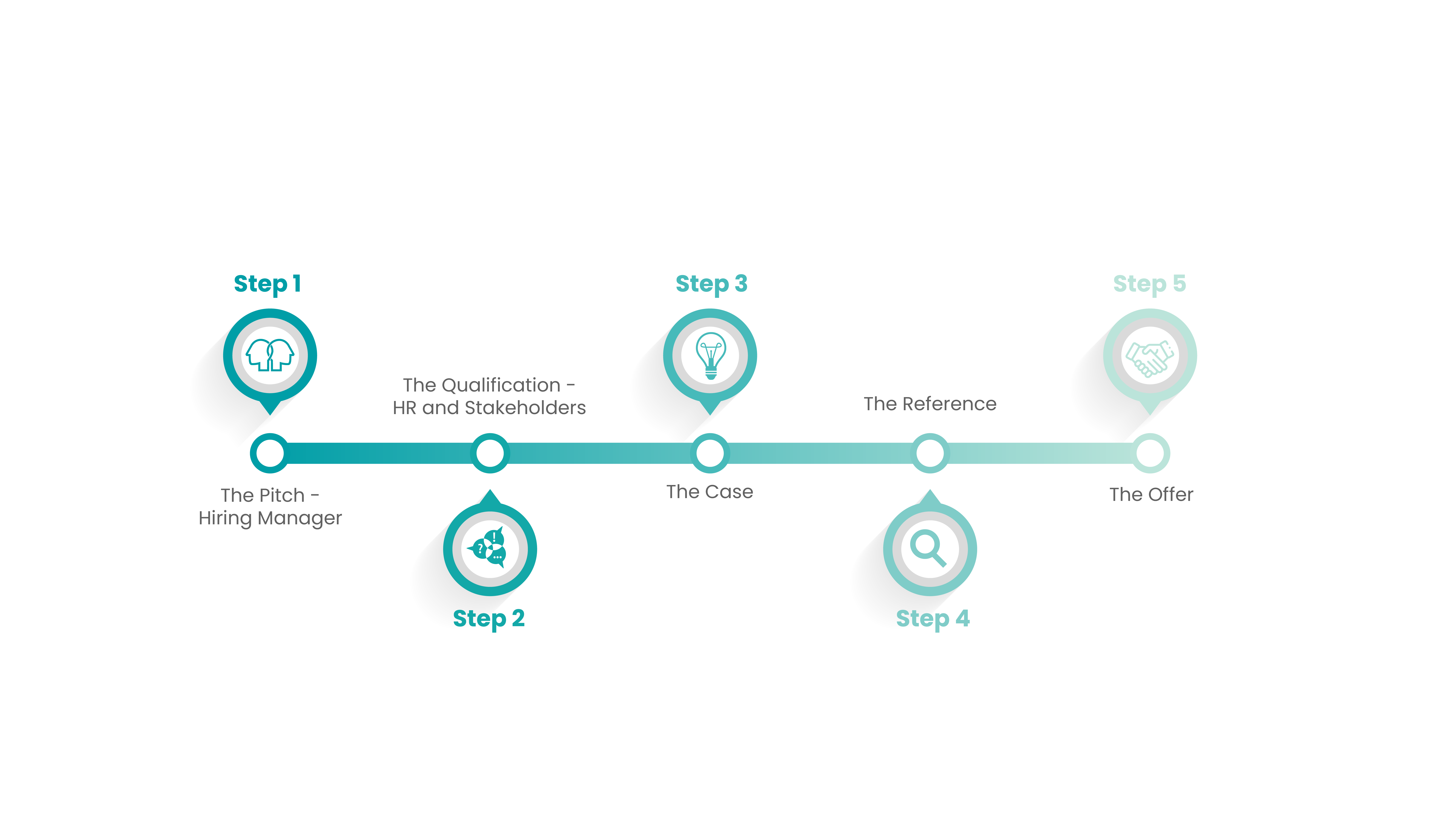
Are you looking to hire leaders, senior management, or C-suite candidates? At Key Search, we know that the interview process to attract leaders differs from the hiring processes of mid-level and junior roles. Sought-after leaders, who are in multiple processes simultaneously, need to be convinced on why changing jobs right now is the right decision.
The candidate you are looking to hire is expected to grow and shape your company. With this in mind, it is essential to adapt to the candidates’ needs. The whole interview process is a key part of selling the opportunity and can and must be much more than just a sterile process.
In my experience, the interview process is where the opportunity to actually create a relationship between candidates and clients lies. This is what makes them feel confident to make the job change.
Source: Franziska Palumbo-Seidel, Founder of Key Search
Contents
Why is a Strategic Interview Process so Important?
Creating a strategic interview process is important, because it helps to assess each candidate fairly. Based on the same topics you identified and to eliminate bias, a list of key topics and high-level questions creates the same framework across all interviews you have scheduled.

The Benefits of a Strategic Interview Process
1. Increase Your Chance of Hiring the Perfect Candidate
How do you know you’ve made the right decision? This question is hard to answer if you did not define what “right” means for this role. Beyond qualifications and experience, think about what the candidate should accomplish in this role. Create a list and bring this into the interview process as key questions.
2. Plan for the Future, not the Status Quo
Where is the company going in the near future, what is the long-term vision? Based on the first point, following a strategic interview process means that you will be spending quite some time looking ahead and talking about the future of the company and how this relates to the role and it will evolve over time.
3. Avoiding Unconscious Bias
What are the criteria and factors that help you evaluate the chance of success for each candidate? Stick to them when evaluating candidates, knowing that factors like ethnicity, gender or religion should not matter.
4. The Positive Interview Experience
Does the hiring manager know which criteria to use when evaluating each candidate for a role? Shape a unique experience based on targeted questions that were created for the role you are hiring for. Give candidates a glimpse into the company, what to expect, and what’s expected of them.
A key element of the hiring process is the interview experience, because it shows a company’s vision, how it communicates and what matters in the daily working environment.
The Strategic Interview Process - A Quick Guide to Topics:
- List of topics to cover based on role and company goals
- Background questions about the candidate
- Structured or industry-specific questions
- A plan for initiating a follow-up interview
- A note-taking and feedback opportunities for each part
The Key Search Step-by-Step Interview Process
Key Search advises the following approach to ensure a successful interview process:

Step 1 - The Pitch - Hiring Manager
The hiring manager should always go first. That first call should always be a selling call from both sides. The hiring manager should make it clear why the opportunity is special and what the vision is. The candidate should show why he is excited about the opportunity and both sides should check out their 3 no-go’s early on to not waste anyone’s time.
Step 2 - The Qualification - HR and Stakeholders
Once the initial parameters are set and both sides are excited about each other, the client should go into assessment mode. The candidate should now prepare himself for each step to prove he can do the job.
Ideally, you want to involve HR, and key stakeholders like peers, as well as an investor, potentially. We avoid including the team interviewing their future boss. They will have a very strong opinion about the executional part of the job as they know it, but might not see the big picture and leadership qualities to drive change. After all, any new boss can also mean a threat and team members tend to be biased on whom to bring in.
Step 3 - The Case
Now is the time to test if the candidate really has what it takes by giving him a real-life situation, case or presentation to do. Ideally you want to combine this step with a half day onsite to get a good feeling of the culture of the client. Ideally, this can be combined with a lunch or dinner to share some personal moments and get the candidates really excited about why this is the right move for them.
Step 4 - The Reference
Taking references from a former boss, a peer and a team member is an important part of the final step towards making an offer to the perfect candidate. It gives insight into the candidate’s work history, accomplishments and can add important information beyond the questions asked in the interview process.
Step 5 - The Offer
This is probably the most crucial part for any leadership hiring. Ideally you want to uncover what’s most important to each candidate early in the interview process. Whenever possible, get your candidate to verbalize that they will accept your offer if it meets their expectations.
If your candidate asks for something out of band, never commit to it on the spot. Have a reason for being noncommittal (e.g. aligning with the client or the board).When presenting an offer, you’ll want to present a verbal offer before sending a written offer. Talking through your offer verbally gives your candidate a chance to ask questions and gives you a chance to offer additional context and read their reactions. In-person or over video is best. Just like in sales, we always present pricing proposals in person or over video, because watching body language is key. Are they smiling? Are they leaning forward? Are they excited?
For more on the topic, head over to the Key Search blog article How To Interview Leaders: Examples & Tips
Key Search Hires Your Leaders
Great leaders don’t apply, they get found.
Source: Franziska Palumbo-Seidel, Key Search founder
Which leader can take your company to the next level? For executive recruiters, and hiring managers alike, it is crucial to create a step-by-step interview process that is tailored to a specific role and reflects the company’s needs.
Key Search understands the ins and outs of the executive hiring process. Our unique research and data-driven approach enables me and our growing team of recruitment specialists to find the very best candidate for your leadership position.
Through our strategic interview process, we help some of the world’s most exciting startups and fast-growth companies hire leaders. It would be my pleasure to take you through our process in a first meet and greet call and discuss how we can help you hire the leaders your company needs.



